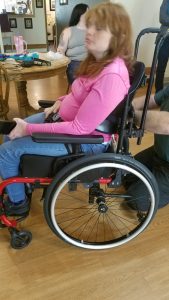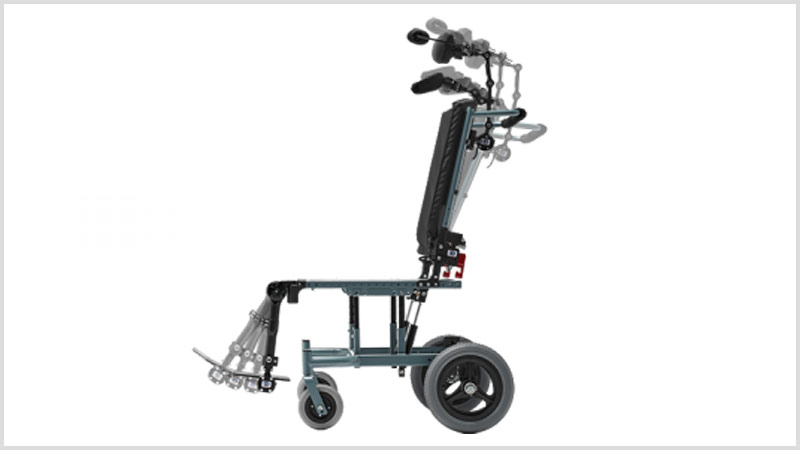Can Dynamic Seating Improve Postural Control?

Dynamic Seating has improved Amanda's trunk control!
Michelle L. Lange, OTR/L, ATP/SMS
updated 11/11/2024
Research has demonstrated that Dynamic Seating has many clinical benefits, including:
- Diffusing force and reducing overall extension (Blog 1)
- Preventing equipment breakage (Blog 1, Blog 2)
- Preventing client injury (Blog 1, Blog 2, Blog 3)
- Providing movement for vestibular input (Blog 1, Blog 2)
- Improvement in Function (Blog 1)
- Maintaining postural alignment by providing movement (Blog 1)
Did you know that research has also demonstrated that Dynamic Seating can improve postural control?
The Problem:
Motor development plateaus for children with cerebral palsy as early as 3 years of age with one out of three children unable to gain adequate trunk control for stable, independent sitting (Beckung, et al., 2007; Rosenbaum, et al., 2002). The estimated limit of development decreased as severity of impairment increased (Rosenbaum, et al., 2002). Many clients using wheelchair seating have decreased trunk and head control.
How Does Dynamic Seating Help?
Dynamic seating provides resistance to movement initiated by the wheelchair user, usually through spring or elastomer type mechanisms or other resistive, but mobile components. Movement against resistance has been demonstrated to increase strength in people with increased muscle tone (McBurney, et al., 2003) without an increase in spasticity (Fowler, et al., 2001). Increased muscle strength can, in turn, improve both postural control and functioning.
What Does the Research Say?
- Adlam, et al. (2014) found increased head control and increased symmetry in posture using a dynamic seating system.
- Incoronato (2007) noted improved posture in their study.
- Incoronato (2007) found improvement of motor control of the upper extremities, trunk, and head.
- Dalton, (2014) found increased head and arm control with a simulated dynamic foot support.
So, what’s the bottom line? Dynamic Seating can lead to improvements in postural control, particularly trunk and head control. While the main purpose of Dynamic Seating is not therapeutic, one of the advantages of this technology is that it can improve postural control.
References:
Check out our Quick Class on Improving Postural Control and Stability

